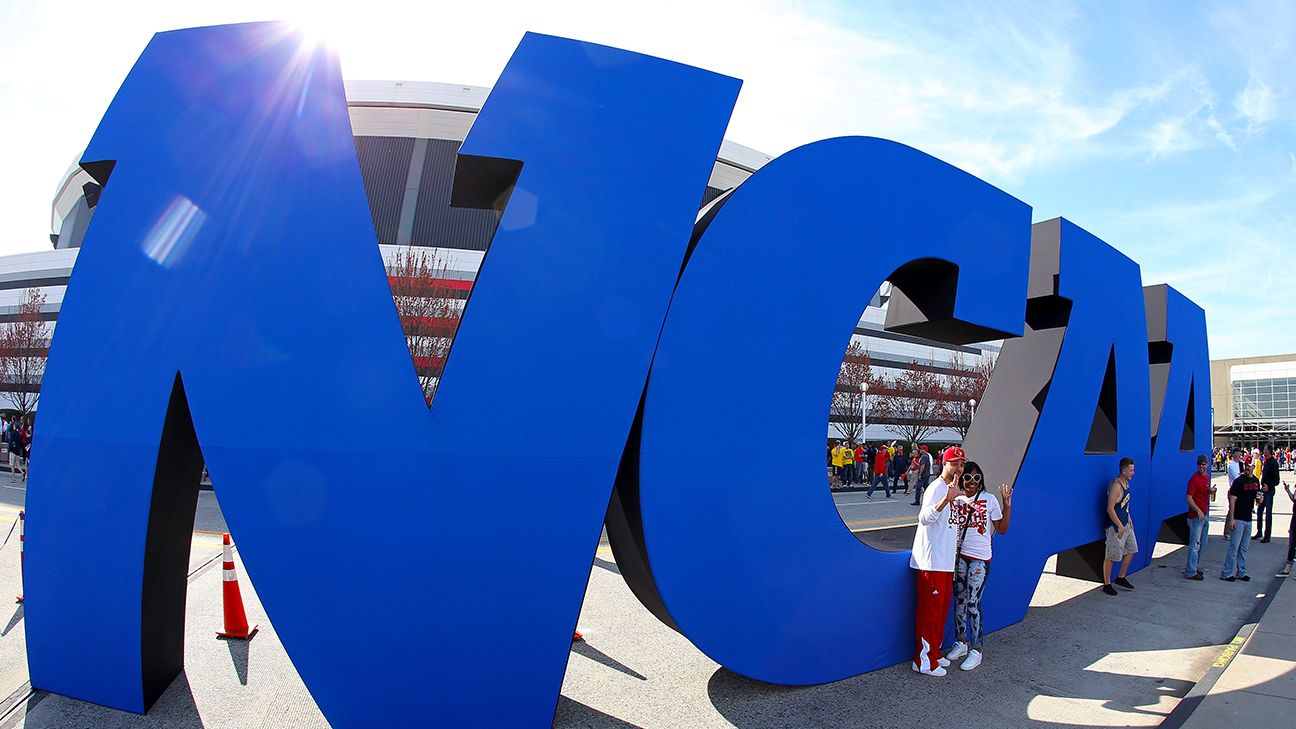
The NCAA Division I Council voted Monday to grant an extra year of eligibility to all student-athletes in spring sports whose seasons were canceled because of the coronavirus pandemic.
The NCAA's decision will extend the eligibility of all spring-sport student-athletes -- not just seniors whose careers would have ended after the cancellation of their seasons -- and will allow schools to expand their rosters beyond current scholarship limits to account for incoming recruits and seniors who were expected to leave.
The NCAA will leave it up to each individual school to decide whether to grant seniors in spring sports less or equal financial aid this coming year than what they received this year. The NCAA said in a statement that the financial aid flexibility applies only to student-athletes who would have exhausted their eligibility in 2019-20.
The waivers will be applied for student-athletes competing in spring sports: baseball, softball, tennis, golf, outdoor track and field, lacrosse, rowing, men's volleyball, beach volleyball and women's water polo. The decision does not include winter sports like basketball, hockey, swimming and diving, and gymnastics.
"The council's decision gives individual schools the flexibility to make decisions at a campus level," said Division I Council chair M. Grace Calhoun, athletic director at the University of Pennsylvania. "The board of governors encouraged conferences and schools to take action in the best interest of student-athletes and their communities, and now schools have the opportunity to do that."
The council also increased the roster limit in baseball for student-athletes impacted by the COVID-19 pandemic, the only spring sport with such a limit.
Last week, NCAA president Mark Emmert expressed concerns about schools being able to incur the additional scholarship costs in the current economic environment.
"The next 12 months are going to be extremely hard on a lot of colleges and universities, especially small colleges that aren't going to have tuition revenue," Emmert said. "They're going to have high costs because they sent their students away, but they still have all of their costs. They're not going to have any revenue from their endowments because of the crash of the stock market. The revenue from the tournaments isn't going to be there, and the revenue from us is unlikely to be as big as it has been in the past.
"So then to turn around and say, 'By the way, we're going to increase the cost of your student athletics program,' that's a challenge. For the big schools that are the high-revenue institutions, that's a whole different deal. You have to remember that college sports is, of course, something 1,100 different schools do, and the business models for all of them are very different."















 Phone: (800) 737. 6040
Phone: (800) 737. 6040 Fax: (800) 825 5558
Fax: (800) 825 5558 Website:
Website:  Email:
Email: 






